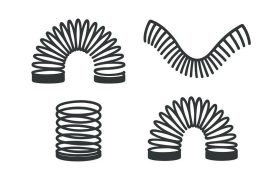Can we improve the student experience and build academic integrity without adding to administration load for teaching staff? Lecturer in the School of Economics Dr Ellen Stuart asked herself this question while preparing to teach ECON6010 Microeconomics A after Sydney returned to full-time on-campus teaching. A major goal of Ellen’s work was to incentivise face-to-face attendance at lectures, particularly for those students who had not had many, if any, experiences of on-campus learning in the previous few years. These students may have missed out on experiencing the benefits that a rich social experience of learning can bring:
For students who spent several years learning remotely, the benefits of attending class in-person are not necessarily top of mind—and how could they be, if they had not experienced them? Given all this, I thought it was important to help students transition back to in-person learning by incentivising on-campus, in-class attendance.
Ellen landed on the idea of short, weekly, paper-based in-class quizzes – with the logistics made easier using Gradescope.
Benefits for both staff and students
Ellen found multiple benefits to these paper-based, in-class quizzes. First, in-person attendance increased dramatically. Ellen noted that, in any given week, attendance was about 95% at the beginning of class. While some students would trickle out through the three-hour class, attendance rates at the end of the class period were still considerably higher than in previous semesters—usually 50-75%. Second, her students exhibited significantly more engagement with unit content. Students regularly approached Ellen during breaks in class with questions about the material. She also saw increased attendance at her office hours. Third, both teacher and students benefited from continuous feedback:
The quiz results and the increased in-class interactions with students helped me understand much better where there were gaps in understanding. This allowed me to adjust my emphasis or where I spent extra time during the lecture, more or less in real time.
Finally, using a paper-based in-class assessment had the advantage of offering assurance of learning, as the quizzes were invigilated and closed-book. Ellen was certain that the answers written on the pages were coming from her students rather than from generative AI tools.
What about the workload?
In Ellen’s case, weekly quizzes were the answer for how to improve both student experience and academic integrity. But in-class paper-based assessments pose a challenge for instructors; what about the hours of admin required to handle marking and returning a paper-based assessment? The solution: Gradescope. This online tool (enabled in Canvas) allowed Ellen to mark her weekly, paper-based quizzes in a way that was consistent, thorough, and efficient, without the potential academic integrity issues of a Canvas quiz or other online assignment or the logistical headache of a stack of papers.
Gradescope made the educational benefits of the weekly, paper-based quizzes far outweigh the potential administrative burden.
Gradescope allows instructors to run paper-based, invigilated assessments, scan them in bulk, and upload them to mark online in a way that streamlines much of the admin of the process.
How did students respond?
How did the students feel about being ‘forced’ to come to class? The weekly quizzes were mentioned multiple times in the USS survey – in a uniformly positive way. Ellen received no negative feedback on the quizzes. In response to the question “What have been the best aspects of this unit of study?” students responded:
The weekly quiz gives me motivation to digest and understand the new knowledge right after class rather than leave it until I have to.
The constant learning given that there were quizzes every week.
The every week quiz.
In addition, in an informal survey of the unit, one student said:
At first, I thought the quiz is just a burden, but now I think in-class quiz is a very effective way to learn the subject. Also, the weekly review for the quiz will release the final (exam) pressure.
Other uses of Gradescope in the School of Economics
Ellen didn’t only use Gradescope for traditional quizzes. The first ‘quiz’, which ran in Week 2, was actually a survey with no correct answers to help students become familiar with the format. This survey asked students for their ex-ante opinions on topics that would be covered later in class, roughly one question per lecture. For example, “Will people save enough for retirement without government intervention?” Ellen would then share the results of the relevant survey question each week as an anonymised graph, generated easily using Gradescope. Students began to look forward to finding out the results of the survey each week, and it helped call attention to the wide range of opinions on these topics.
Ellen’s innovative uses of Gradescope has inspired others across the School of Economics to experiment with similar in-class assessments:
Dr Chandana Maitra opted to use Gradescope for an in-class article review in a capstone unit of 150 students. A robust approach to academic integrity is critical in this unit.
We did not want students to use generative AI for this article review so the best way to discourage this was to have the review be written in-class. Marking paper-based submissions by hand would have been difficult to moderate and to provide feedback back to students, so using Gradescope really saved us a lot of headaches.
Professor Andrew Wait, Deputy Head of School for Education in the School of Economics, incorporated a weekly paper-based in-class writing exercise in a large communications-focused unit of more than 350 students. This new assessment allowed students to receive plenty of feedback on weekly in-tutorial writing practice, which helped them meet the learning outcomes of the unit. Using Gradescope was also helpful for Andrew’s marker who is based far from campus, as with Gradescope she’s able to mark quickly and efficiently without having to travel to campus.
Gradescope has been remarkable in facilitating this assessment. Attendance is high, the assessment is ‘secure’ from an academic integrity standpoint, and I can moderate marks across a large cohort with a marker who works remotely. I plan to implement this assessment redesign in other units I teach, too, and to recommend it to all coordinators in my school, whether for small, continuous assessments or final examinations.
Tell me more!
If you are in the Faculty of Arts and Social Sciences and would like to learn more about using Gradescope, please email [email protected], our Educational Design team can help. Or, review Sydney’s Gradescope resources.





